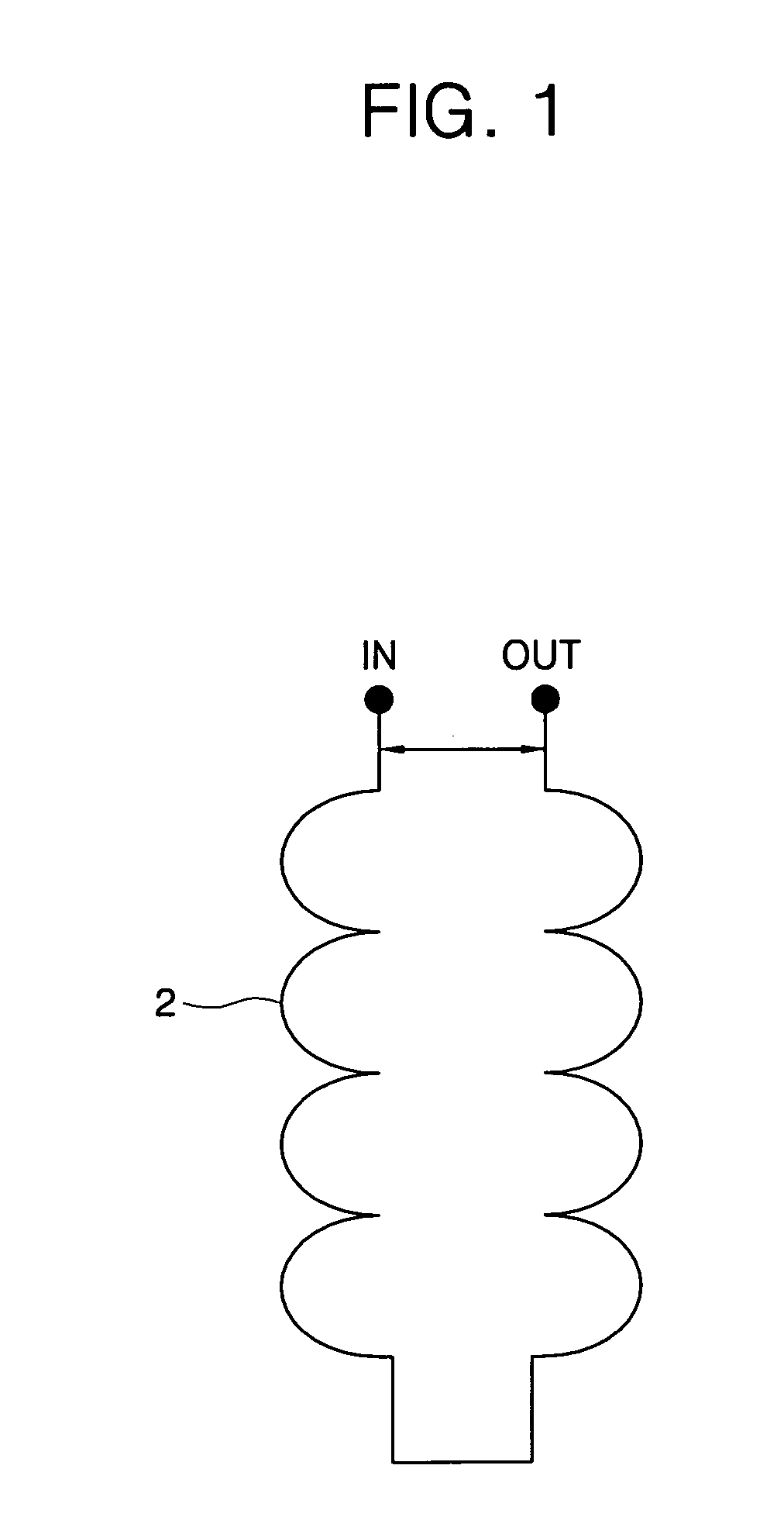Resistive superconducting fault current limiter
- Summary
- Abstract
- Description
- Claims
- Application Information
AI Technical Summary
Benefits of technology
Problems solved by technology
Method used
Image
Examples
first embodiment
[0049] Referring to FIGS. 3 to 10, the resistive superconducting fault current limiter in accordance with the present invention includes a first superconducting module 10, a second superconducting module 20, and a connecting member 30.
[0050] Referring to FIGS. 3 to 5, the first superconducting module 10 is connected to an input terminal side of a power system (for example, a power transmission line) in order to stabilize insulation characteristics. The first superconducting module 10 includes a first outer bobbin 11, a first wire 12, a first inner bobbin 13, a second wire 14, a current introduction terminal 15.
[0051] Referring to FIG. 4, the first outer bobbin 11 has a predetermined diameter of cylindrical shape, and the first wire 12 is wound on a peripheral surface of the first outer bobbin 11 in one direction with a predetermined inclination angle.
[0052] The first inner bobbin 13 has a diameter smaller than that of the first outer bobbin 11, and is disposed in the first outer b...
second embodiment
[0102]FIGS. 12 and 13 illustrate the present invention, showing a plurality of wires parallelly connected to one bobbin.
[0103] That is, the second embodiment of the present invention includes the plurality of wires wound around the one bobbin, rather than using the connecting member of the first embodiment.
[0104] The current limiter of the second embodiment includes a bobbin 41 having a predetermined diameter, a first wire winding groove 42 formed on a peripheral surface of the bobbin 41 in one direction with a predetermined inclination angle, a second wire winding groove 43 formed to have a depth different from the first wire winding groove 42 through a stepped surface in the other direction with a predetermined inclination angle, an inner wire 44 wound in the first wire winding groove 42, an outer wire 45 wound in the second wire winding groove 43, an insulting material 46 formed between the inner wire 44 and the outer wire 45, a current introduction terminal (not shown) and a cu...
PUM
 Login to View More
Login to View More Abstract
Description
Claims
Application Information
 Login to View More
Login to View More - R&D
- Intellectual Property
- Life Sciences
- Materials
- Tech Scout
- Unparalleled Data Quality
- Higher Quality Content
- 60% Fewer Hallucinations
Browse by: Latest US Patents, China's latest patents, Technical Efficacy Thesaurus, Application Domain, Technology Topic, Popular Technical Reports.
© 2025 PatSnap. All rights reserved.Legal|Privacy policy|Modern Slavery Act Transparency Statement|Sitemap|About US| Contact US: help@patsnap.com



